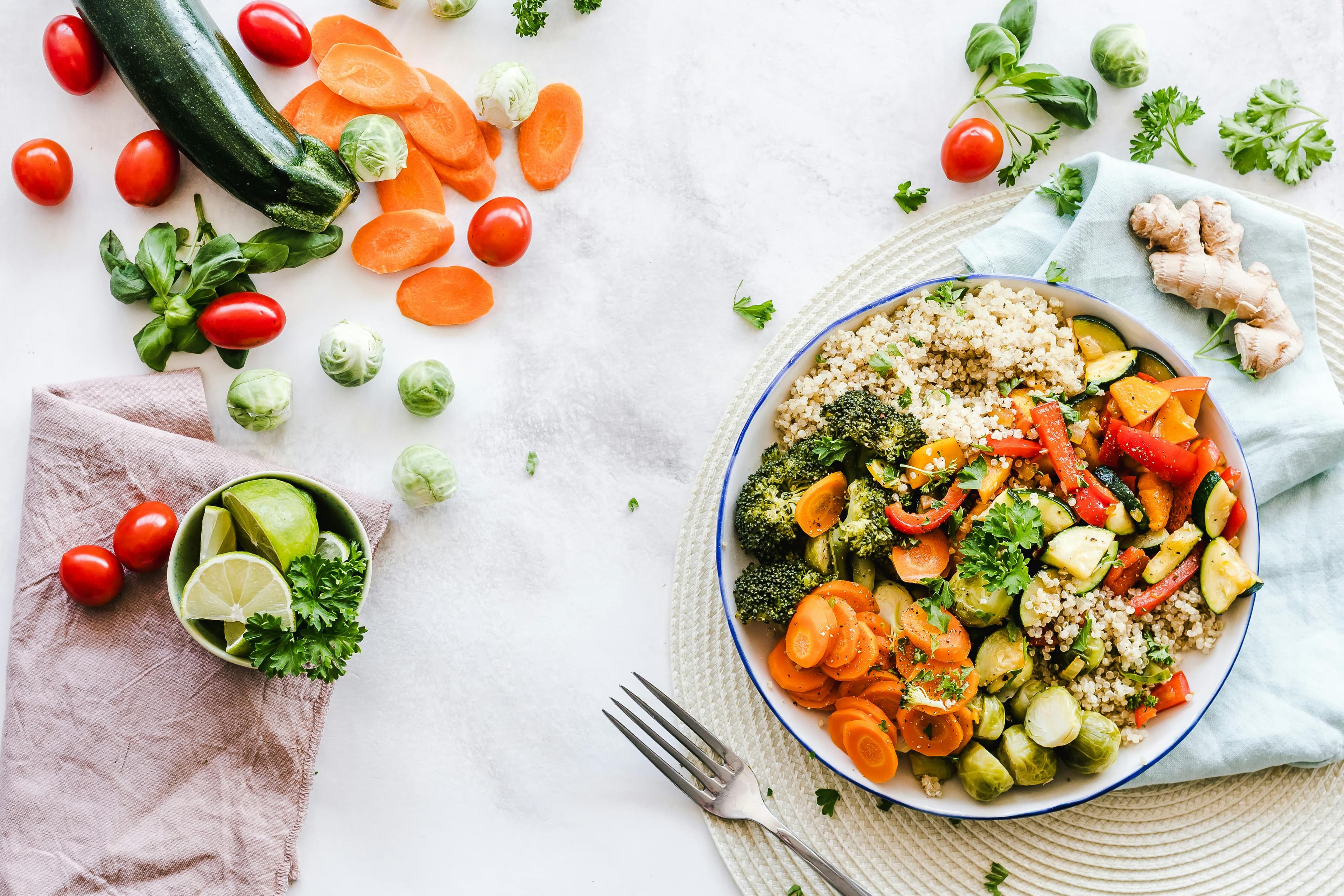Perimenopause Weight Loss: Your Complete Guide to Managing Weight During the Transition
Evidence-based strategies for navigating weight changes during perimenopause with hormone-aware nutrition and lifestyle approaches
Key Takeaways
- Perimenopause slows metabolism by 2-5% yearly due to hormonal fluctuations
- Protein needs increase to 1.2-1.6g per kg body weight to preserve muscle
- Strength training 3x weekly is essential for metabolic health
- Sleep and stress management are foundational for weight loss
- Hormone fluctuations require flexible, patient approach
- Focus on body composition over scale weight alone
Medical Disclaimer

Perimenopause—the transitional period before menopause—brings significant hormonal changes that can make weight management feel like an uphill battle. If you've noticed stubborn weight gain around your midsection despite maintaining your usual habits, you're not alone. Research shows that women gain an average of 1.5 pounds per year during perimenopause, with most of it settling around the belly.[1]
This comprehensive guide provides evidence-based strategies specifically designed for the unique challenges of perimenopause. We'll explore why traditional weight loss methods often fail during this transition and share hormone-aware approaches that actually work.
Understanding Perimenopause: The Transition Timeline
Perimenopause Phases & Weight Impact
Early Perimenopause (Ages 40-45)
Subtle hormone fluctuations begin. Many women notice changes in cycle length, PMS intensity, and slight weight shifts around the midsection. Metabolism may slow by 1-2% annually.
Mid-Perimenopause (Ages 45-50)
More dramatic hormone swings occur, with estrogen levels fluctuating wildly. Irregular periods, increased weight gain (especially belly fat), sleep disruption, and mood changes become common. Metabolism slows 2-5% yearly.
Late Perimenopause (Ages 50-52)
Estrogen drops significantly, periods become very irregular or stop, and weight management becomes most challenging before transitioning to menopause. Body composition shifts dramatically.
"The hormonal chaos of perimenopause creates a perfect storm for weight gain. Understanding this isn't about making excuses—it's about developing strategies that work with your changing biology, not against it."
Endocrinologist, Women's Hormone Health Specialist
Why Perimenopause Makes Weight Loss So Difficult
Hormonal Chaos
- Estrogen Rollercoaster:
Wild fluctuations affect appetite hormones and fat storage patterns
- Progesterone Decline:
Reduces calming effects, increases cortisol and stress eating
- Insulin Resistance:
Makes it harder to burn stored fat, especially around midsection
- Cortisol Elevation:
Chronic stress hormones promote visceral fat storage
Metabolic Changes
- Slower Metabolism:
2-5% decrease per year during transition
- Muscle Loss:
3-8% decrease per decade accelerates without intervention
- Fat Distribution Shift:
From hips/thighs to belly and internal organs
- Sleep Disruption:
Affects leptin and ghrelin, increasing hunger

The Perimenopause Weight Loss Strategy
Calculate Your Needs
Use our specialized calculators designed for hormonal transitions:
Hormone-Fluctuation Aware Approach
🍽️ Nutrition Priorities
- Higher protein (1.2-1.6g per kg body weight)
- Stable blood sugar management
- Anti-inflammatory foods daily
- Calcium and vitamin D support
- Phytoestrogen-rich foods
💪 Lifestyle Foundations
- Strength training 3x per week minimum
- Stress management as priority #1
- Sleep optimization (7-9 hours)
- Moderate calorie deficit (300-500)
- Flexible approach during hormone swings
Best Foods for Perimenopause Weight Loss
🌱 Hormone-Supporting Foods
- • Flaxseeds and chia seeds (lignans)
- • Soy products (tofu, tempeh, edamame)
- • Legumes and beans
- • Cruciferous vegetables
- • Berries rich in antioxidants
- • Sweet potatoes and yams
Rich in phytoestrogens and fiber
🥩 Metabolism-Boosting Proteins
- • Lean meats and poultry
- • Wild-caught fish (salmon)
- • Eggs (complete amino acids)
- • Greek yogurt and cottage cheese
- • Protein powder (plant or whey)
- • Quinoa and hemp seeds
Higher thermic effect helps metabolism
🔥 Anti-Inflammatory Fats
- • Avocados and olive oil
- • Nuts and seeds (almonds, walnuts)
- • Fatty fish (sardines, mackerel)
- • Coconut oil for cooking
- • Olives and tahini
- • Dark chocolate (85% cacao)
Support hormone production
Foods to Limit During Perimenopause
Hormone Disruptors:
- • Refined sugars and high-fructose corn syrup
- • Processed foods with additives
- • Trans fats and inflammatory oils
- • Excessive alcohol (limit to 3-4 drinks/week)
Symptom Triggers:
- • Spicy foods (may trigger hot flashes)
- • Caffeine after 2 PM (sleep disruption)
- • Large meals before bedtime
- • High-sodium foods (bloating, mood)

Sample Perimenopause Weight Loss Meal Plan
7-Day Hormone-Balancing Plan (1,600 calories)
Day 1: Focus on Phytoestrogens
Breakfast:
Overnight oats with ground flaxseed, berries, and almond butter
Protein: 22g | Fiber: 12g
Lunch:
Tofu and vegetable stir-fry over quinoa
Protein: 28g | Phytoestrogens: High
Dinner:
Baked salmon with roasted sweet potato and broccoli
Protein: 30g | Omega-3s: High
Day 2: Anti-Inflammatory Focus
Breakfast:
Greek yogurt parfait with walnuts and tart cherries
Protein: 25g | Antioxidants: High
Lunch:
Large salad with chickpeas, avocado, and olive oil dressing
Protein: 20g | Fiber: 15g
Dinner:
Grilled chicken with roasted Brussels sprouts and wild rice
Protein: 32g | Cruciferous: High
Day 3: Blood Sugar Stability
Breakfast:
Vegetable omelet with whole grain toast
Protein: 24g | Complex carbs
Lunch:
Lentil soup with side salad and hemp seeds
Protein: 22g | Steady energy
Dinner:
Turkey meatballs with zucchini noodles and marinara
Protein: 28g | Low glycemic
Need the complete 7-day plan with recipes and shopping list?
Get Free Perimenopause Meal PlanExercise During Perimenopause: What Actually Works
💪 Strength Training (Priority #1)
Why It's Essential:
- • Combats accelerated muscle loss
- • Increases bone density
- • Improves insulin sensitivity
- • Boosts metabolism long-term
Recommended Schedule:
3x per week, focusing on compound movements (squats, deadlifts, rows)
🚶♀️ Cardio Guidelines
Moderate Intensity (150 min/week):
- • Brisk walking or hiking
- • Swimming or water aerobics
- • Cycling or elliptical
- • Dancing or group fitness
High Intensity (2x/week max):
Short intervals only - too much can elevate cortisol
🔄 Cycle Your Workouts with Hormones
High Energy Days:
- • Strength training with heavier weights
- • High-intensity interval training
- • Challenging yoga or Pilates
- • Longer cardio sessions
Low Energy/PMS Days:
- • Gentle yoga or stretching
- • Easy walks in nature
- • Light bodyweight exercises
- • Restorative activities
Listen to your body: Some days rest is more beneficial than pushing through fatigue.

Managing Perimenopause Symptoms That Sabotage Weight Loss
😴 Sleep Disruptions
Nutrition Solutions:
- • Magnesium-rich foods (pumpkin seeds, spinach)
- • Tart cherry juice for natural melatonin
- • Complex carbs in evening (small portions)
- • Limit caffeine after 12 PM
Sleep Hygiene:
- • Cool bedroom (65-68°F)
- • Blackout curtains or eye mask
- • White noise or earplugs
- • Consistent bedtime routine
🔥 Hot Flashes & Night Sweats
Cooling Foods:
- • Cucumber, melon, leafy greens
- • Cold herbal teas (peppermint, spearmint)
- • Frozen fruit smoothies
- • Room temperature or cold meals
Triggers to Avoid:
- • Spicy foods and hot beverages
- • Alcohol (especially wine)
- • Caffeine in afternoon/evening
- • Large, heavy meals
🧠 Mood Swings & Anxiety
Mood-Stabilizing Nutrients:
- • Omega-3 fatty acids (fish, walnuts)
- • B-complex vitamins (whole grains)
- • Magnesium (dark chocolate, nuts)
- • Probiotics (fermented foods)
Stress Management:
- • Daily mindfulness or meditation
- • Gentle yoga or stretching
- • Deep breathing exercises
- • Regular social connections
Supplements for Perimenopause Weight Loss Support
Evidence-Based Options:
- •
Omega-3s (1-2g daily)
Reduce inflammation, support mood, may help with weight management[4]
- •
Vitamin D (1000-2000 IU daily)
Many perimenopausal women are deficient; supports mood and bone health
- •
Magnesium (200-400mg daily)
Improves sleep quality, reduces anxiety, supports muscle function
- •
Protein Powder (20-25g daily)
Helps meet increased protein needs for muscle preservation
Herbal Support (Consult Provider):
- •
Black Cohosh
May help with hot flashes and mood swings
- •
Red Clover
Contains isoflavones that may help with symptoms
- •
Ashwagandha
Adaptogen that may help manage stress and cortisol
Important
Realistic Weight Loss Goals During Perimenopause
🎯 Setting Healthy Expectations
- Rate of loss: 0.5-1 pound per week (slower during hormone surges)
- Focus areas: Waist circumference and body composition over scale weight
- Timeline: 6-12 months for significant, sustainable changes
- Flexibility: Some weeks may show no loss due to hormone fluctuations
- Success metrics: Energy levels, sleep quality, mood stability
- Body changes: Reduced bloating, better fit of clothes
- Health markers: Blood pressure, cholesterol, blood sugar improvements
- Strength gains: Increased functional fitness and confidence
"Success during perimenopause isn't just about the number on the scale. It's about maintaining muscle mass, improving metabolic health, and feeling strong and confident in your changing body. Celebrate all victories, not just weight loss."
Certified Personal Trainer, Menopause Fitness Specialist
Common Perimenopause Weight Loss Mistakes
❌ What Backfires During Perimenopause
- • Extreme calorie restriction (slows metabolism further)
- • Excessive high-intensity exercise (elevates cortisol)
- • Ignoring sleep and stress management
- • Using same strategies from younger years
- • Focusing only on cardio (ignores muscle loss)
- • All-or-nothing mentality
✅ Hormone-Smart Strategies
- • Moderate, sustainable calorie deficit
- • Prioritize strength training and recovery
- • Address sleep and stress as foundational
- • Adapt approach for hormonal changes
- • Include hormone-supporting foods
- • Be flexible and patient with fluctuations
References
- 1.Santoro N, et al. The Menopause Transition: Signs, Symptoms, and Management Options. J Clin Endocrinol Metab. 2021;106(1):1-15.
- 2.Kozakowski J, et al. Obesity in menopause - our negligence or an unfortunate inevitability? Prz Menopauzalny. 2017;16(2):61-65.
- 3.Davis SR, et al. Understanding weight gain at menopause. Climacteric. 2012;15(5):419-429.
- 4.Lombardi M, et al. Hormone Therapy and Physical Exercise in Menopause: A Review. Nutrients. 2022;14(5):1074.
- 5.Knight JA, et al. Physical Activity and Dietary Interventions in Perimenopause. Best Pract Res Clin Obstet Gynaecol. 2023;88:102333.
Ready to Navigate Perimenopause Weight Loss?
Get personalized meal plans and expert guidance designed specifically for women in perimenopause.
More helpful tools:
No spam, unsubscribe at any time.
Related Articles
Continue your PCOS journey with these helpful guides
Hormone Balancing Foods: Your Complete Guide
Discover the best foods for supporting hormonal health naturally
Understanding Your Macros During Hormonal Changes
Learn how to adjust your macronutrient ratios for different life stages
Asian Women's Approach to Hormonal Health
Traditional wisdom for managing menopause naturally